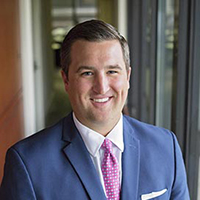Growing Your Practice During COVID
Growing Your Practice During COVID
2020 has been dominated by COVID-19, with the effects of the global pandemic reaching across every industry to change the way we fundamentally operate. While there have been many articles highlighting the economic woes in the U.S., on an individual level, there is no downplaying the serious impact this health crisis has had on personal finances. In a recent survey by Prudential and Flexjobs, one-third of respondents had lost all of their income as a result of the pandemic, while nearly half do not have enough emergency savings to last another six months.
This economic climate will certainly have a long-lasting impact on investment behaviors. Based on study findings that were released at the Federal Reserve Bank of Kansas City’s annual conference in September, this pandemic could very well create pessimism among investors that is “likely to dampen risk-taking and economic output for decades.”
During these challenging times, growing a financial advisery firm remains a study in the fundamentals: understanding your clients and building on relationships. These are skills that all financial advisers work to master, but against the background of a global pandemic, that puts people at risk simply if they are within six feet of each other, we’re seeing an accelerated shift in digital opportunities to engage with clients more effectively to drive business.
Financial Advice Goes Online
Digital tools like video conferencing that support online communications with clients are not new to financial advisers, but their increased adoption into everyday workflows is certainly a shift in “business as usual” post-COVID. This goes hand-in-hand with the need to connect with clients on a more frequent basis. When faced with economic uncertainties, people require even more reassurance that their investments are in good hands. Combine this with the added isolation of working from home and the pressures of juggling homeschooling or care for children and the elderly, and it’s easy to see why financial advisers may find themselves in a position to provide more emotional support to their clients — in addition to their usual conversations about portfolio performance.
This is why it’s critical to stay up-to-date on the latest software and tools so that communication occurs on the platforms where clients are likely to engage. Phone calls and texts are still effective ways to stay in touch, but Zoom, Google Meet, and Skype are becoming some of the most commonly used applications to enable video calls for valuable “face-to-face” meetings.
A Multichannel Approach
To maximize engagement with potential clients, financial advisers and companies must employ a multichannel strategy that leverages diverse methods of communication, including email, phone, and video. In a recent survey by Fidelity, those who used such an approach reported the most prospecting success, with 74% of respondents noting average or above average results. Of the advisers who only used email to prospect, three-quarters of them reported below average results. Monthly email newsletters and individual phone calls or video chats are all good ways to create multiple points of contact. In the absence of traditional, in-person meetings, connecting through alternative methods is crucial to growing potential business.
The Power of Social Media
Social media is also an important element in any multichannel marketing strategy. Since the start of the pandemic in the U.S., around 50% of American adults were using social media more, according to a recent Harris Poll. Facebook, LinkedIn, Twitter, and Instagram are all platforms where potential clients can be found. With Google searches for “coronavirus money help” increasing by 3,600% at the beginning of the pandemic, financial advisers can fill the need for more digital resources by creating material about loan programs and personal financial support that can be distributed across social media channels. Podcasts, blogs, and infographics are all examples of the types of content that can be used to position financial advisery firms as authorities on the latest information impacting personal finances — especially when people are spending more time online.
To increase the value of your content, think about repurposing each piece of collateral in different ways across multiple social media platforms. Holding a webinar over Zoom? Promote the live session through LinkedIn and Twitter, record it and then use a clip in an Instagram post that leads prospects to your site for instructions on how they can download and watch the on-demand version.
Building a Path Forward
The world has changed, but the values held by financial advisers and firms remain the same. Creating and fostering authentic relationships with clients is still the most important objective for advisers, even if a majority of those connections now takes place virtually. In times of market volatility, applying fundamental skills to a flexible marketing strategy that leverages technology and multiple channels of communication will lead to the comprehensive emotional support and financial advice that current and potential clients need right now.
Christopher Crawford is the Director of Advisor Relationships for the Buffalo Funds. He has 10 years of experience in the financial services industry, previously holding positions at Invesco, IMA Financial Group, and Arthur J. Gallagher. At the Buffalo Funds, Christopher works with investment consultant relations, key account management, institutional distribution and client service. His main goal is to partner with advisers to bring business building ideas and provide unparalleled customer support to their business, always striving to make it easy and reliable to work with the entire Buffalo Funds investment team. Christopher received an M.B.A. from Washington University in St. Louis and a B.S.F.A. from Southern Methodist University. He also holds licenses for the Series 7, Series 63, and Series 65.
Click here for links to each fund’s holdings. Fund holdings are subject to change and should not be considered a recommendation to buy or sell any security.
 |
Christopher Crawford |
